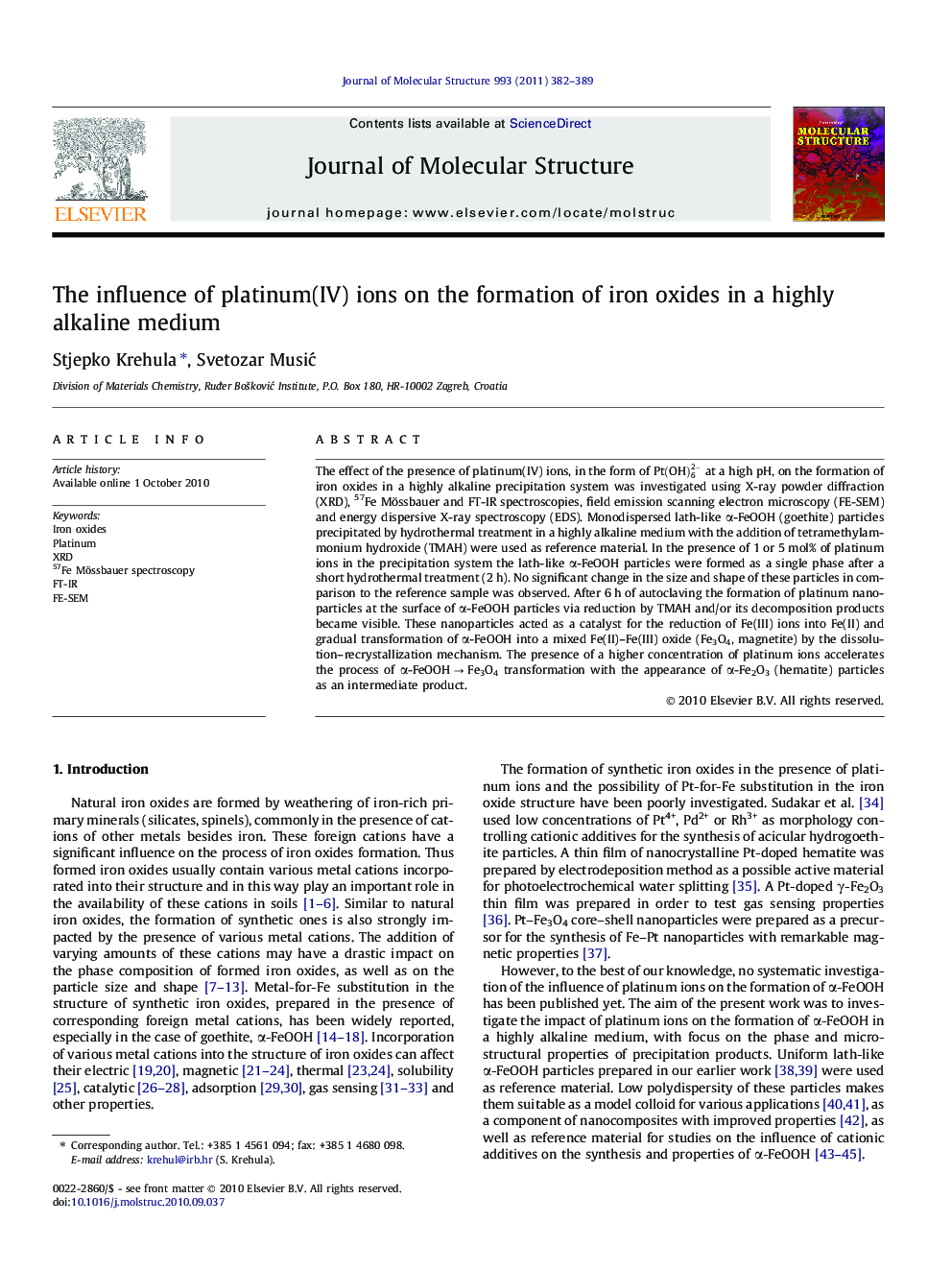| Article ID | Journal | Published Year | Pages | File Type |
|---|---|---|---|---|
| 1406347 | Journal of Molecular Structure | 2011 | 8 Pages |
Abstract
The effect of the presence of platinum(IV) ions, in the form of Pt(OH)62- at a high pH, on the formation of iron oxides in a highly alkaline precipitation system was investigated using X-ray powder diffraction (XRD), 57Fe Mössbauer and FT-IR spectroscopies, field emission scanning electron microscopy (FE-SEM) and energy dispersive X-ray spectroscopy (EDS). Monodispersed lath-like α-FeOOH (goethite) particles precipitated by hydrothermal treatment in a highly alkaline medium with the addition of tetramethylammonium hydroxide (TMAH) were used as reference material. In the presence of 1 or 5 mol% of platinum ions in the precipitation system the lath-like α-FeOOH particles were formed as a single phase after a short hydrothermal treatment (2 h). No significant change in the size and shape of these particles in comparison to the reference sample was observed. After 6 h of autoclaving the formation of platinum nanoparticles at the surface of α-FeOOH particles via reduction by TMAH and/or its decomposition products became visible. These nanoparticles acted as a catalyst for the reduction of Fe(III) ions into Fe(II) and gradual transformation of α-FeOOH into a mixed Fe(II)-Fe(III) oxide (Fe3O4, magnetite) by the dissolution-recrystallization mechanism. The presence of a higher concentration of platinum ions accelerates the process of α-FeOOH â Fe3O4 transformation with the appearance of α-Fe2O3 (hematite) particles as an intermediate product.
Related Topics
Physical Sciences and Engineering
Chemistry
Organic Chemistry
Authors
Stjepko Krehula, Svetozar MusiÄ,
